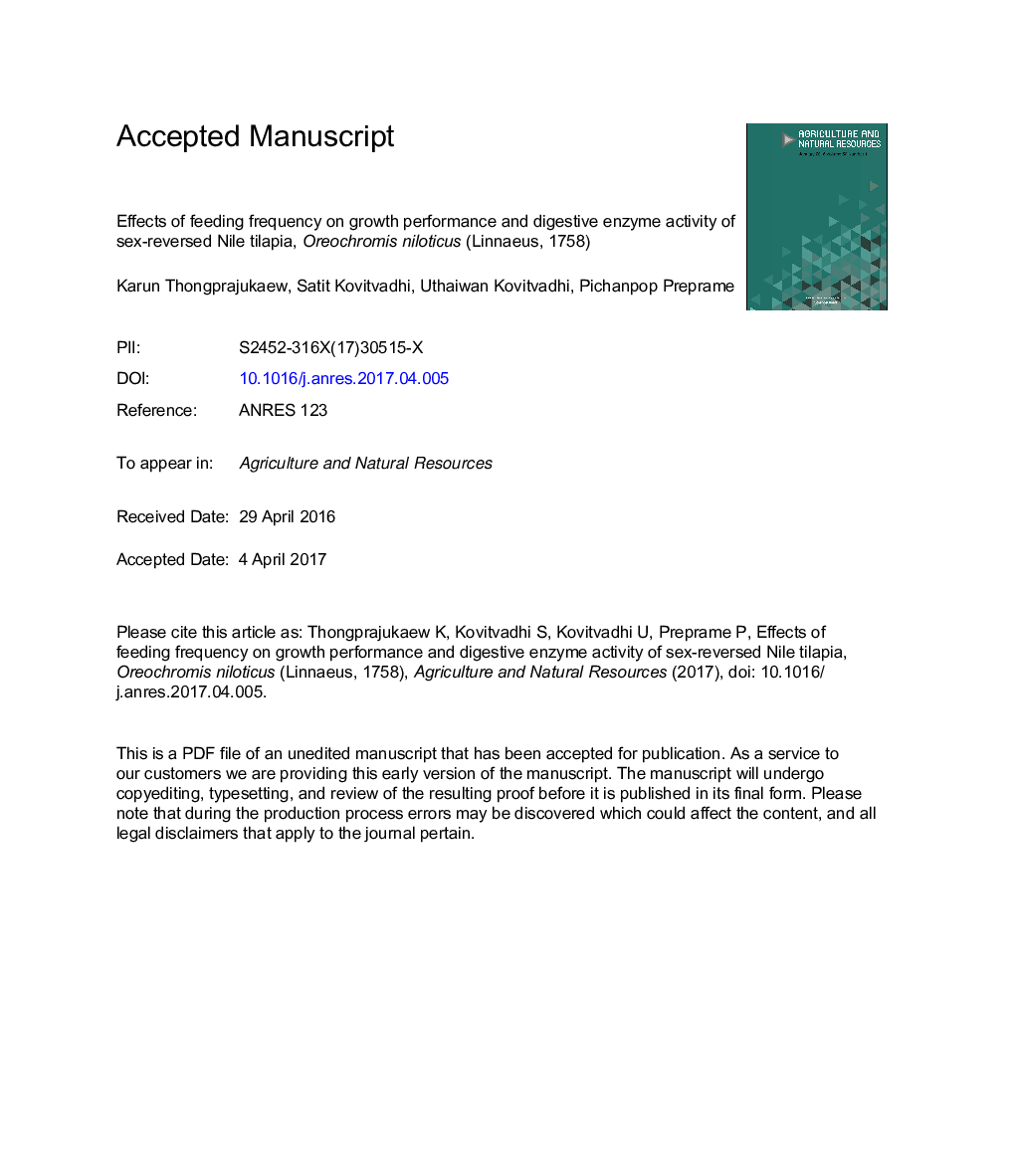| Article ID | Journal | Published Year | Pages | File Type |
|---|---|---|---|---|
| 6538076 | Agriculture and Natural Resources | 2017 | 19 Pages |
Abstract
The effects were investigated of different feeding frequencies-one meal at 0600â¯h, two meals (at either 0600â¯h and 1200â¯h or 0600â¯h and 1800â¯h) and three meals daily (at 0600â¯h, 1200â¯h and 1800â¯h)-on the growth performance, digestive enzyme activity, muscle quality and carcass composition of sex-reversed fingerlings of Nile tilapia, Oreochromis niloticus (Linnaeus, 1758), in a recirculating aquaculture system over a 3â¯mth period. The experiment involved four replicates following a completely randomized design with 30 fish per replication. The growth performance of the fish fed twice daily at 0600â¯h and 1800â¯h and three times daily were similar (pâ¯>â¯0.05) and were higher than for the other treatments. There were no significant differences among the feed conversion ratios of all treatment groups over the 3â¯mth period. The specific activities of digestive enzyme, amylase, lipase, total proteases, trypsin and the ratios of trypsin to chymotrypsin and amylase to trypsin were similar among feeding frequencies. There was a significant decrease in the chymotrypsin specific activity in fish fed less often compared to the three-meals-daily group. The muscle quality and carcass composition were not affected by feeding frequencies, except for the muscle RNA. These results suggested a superior growth capacity of tilapias fed twice daily (0600â¯h and 1800â¯h) which may be of practical use in feeding management for tilapia farming.
Related Topics
Life Sciences
Agricultural and Biological Sciences
Forestry
Authors
Karun Thongprajukaew, Satit Kovitvadhi, Uthaiwan Kovitvadhi, Pichanpop Preprame,
